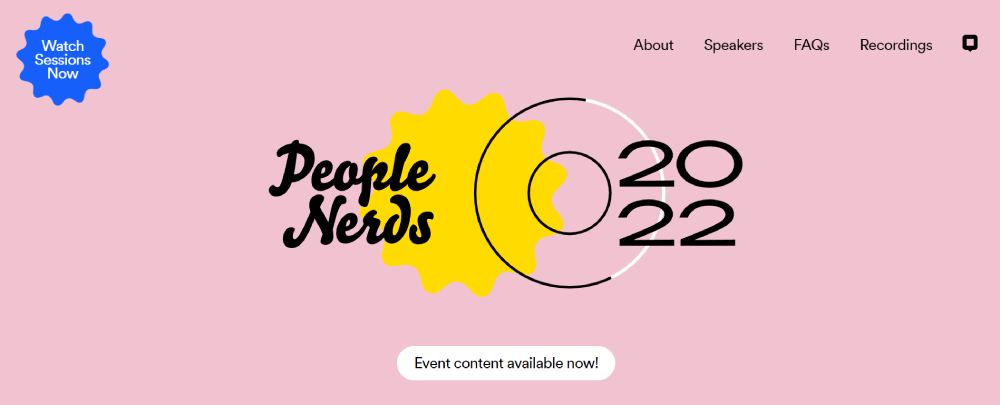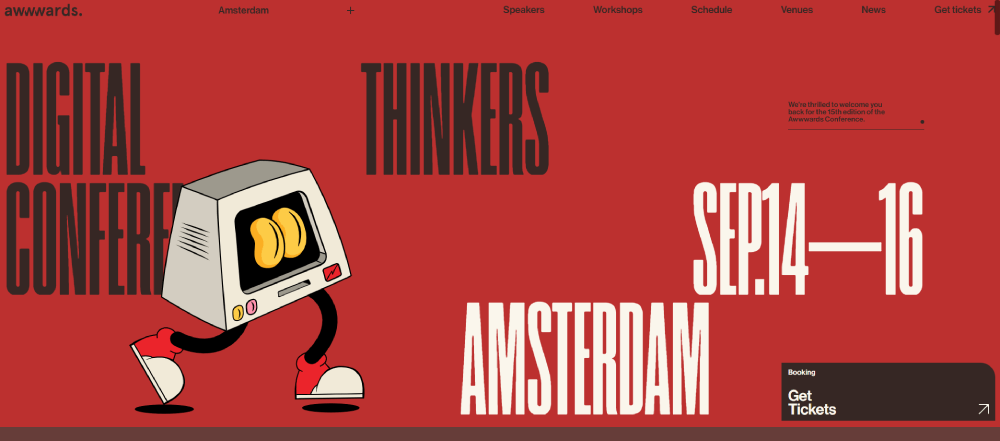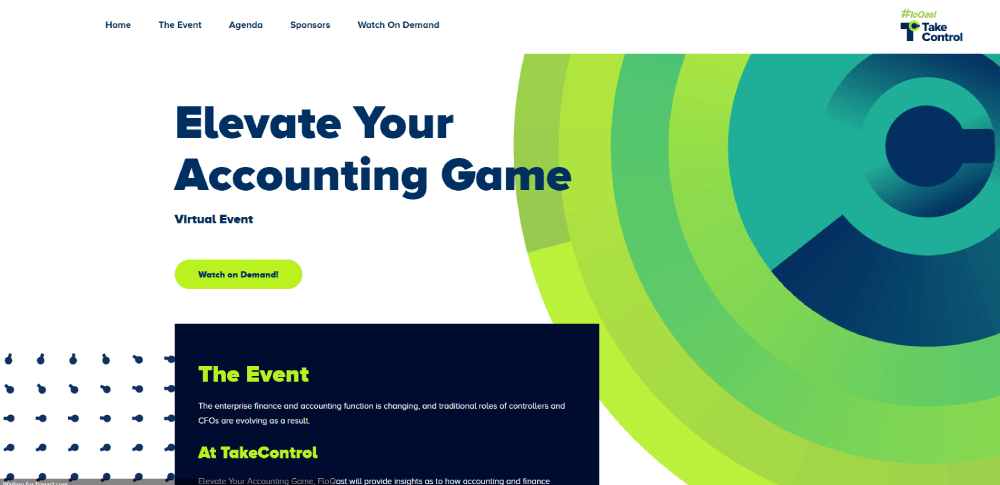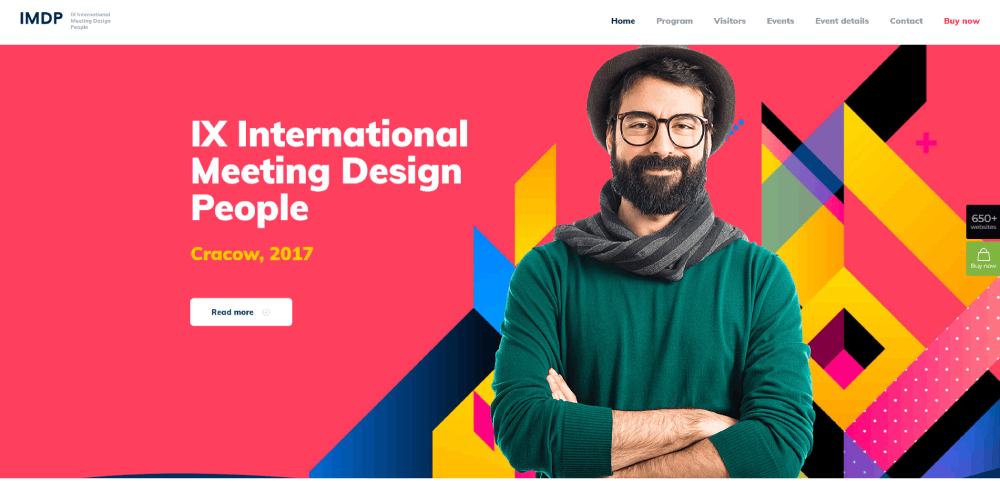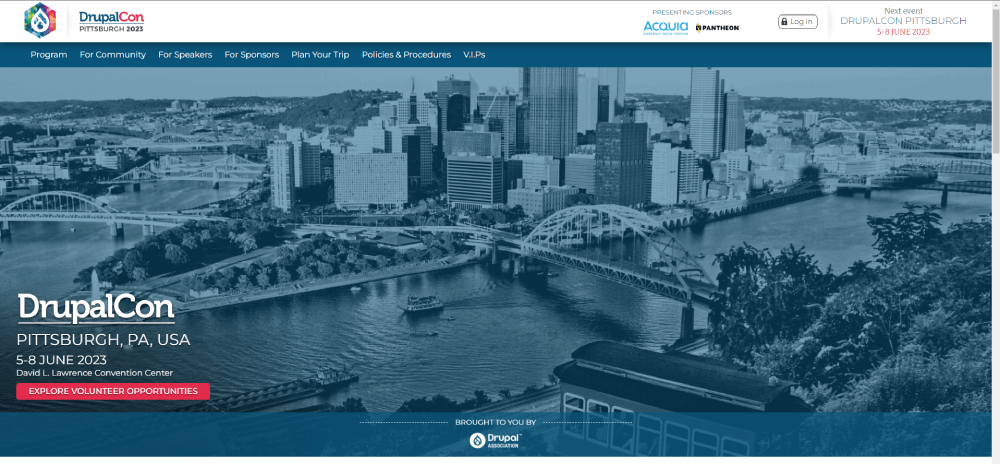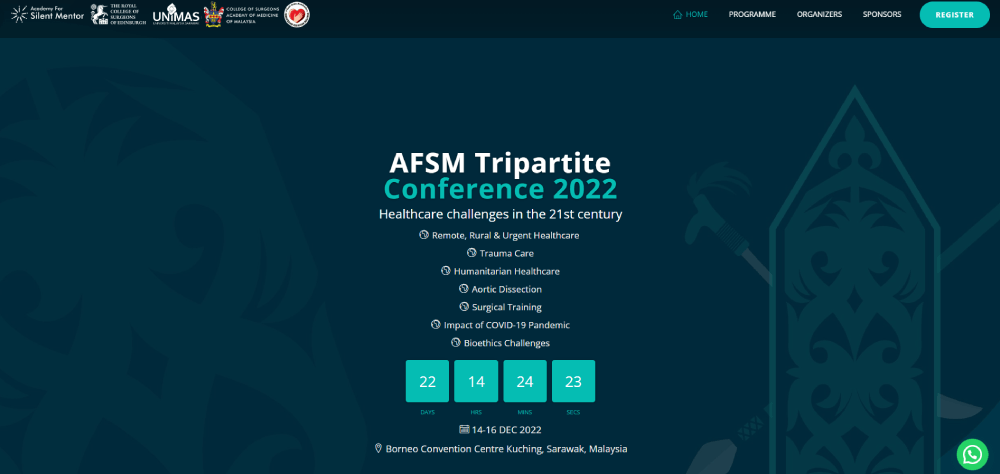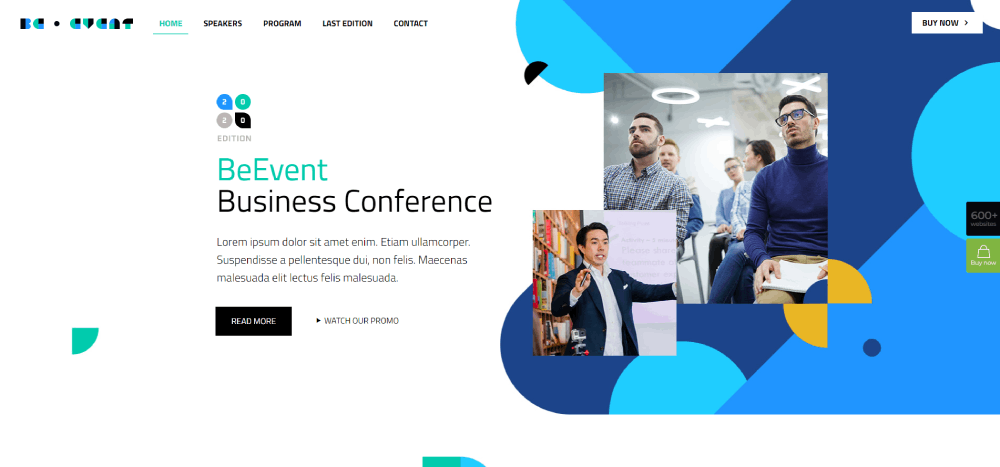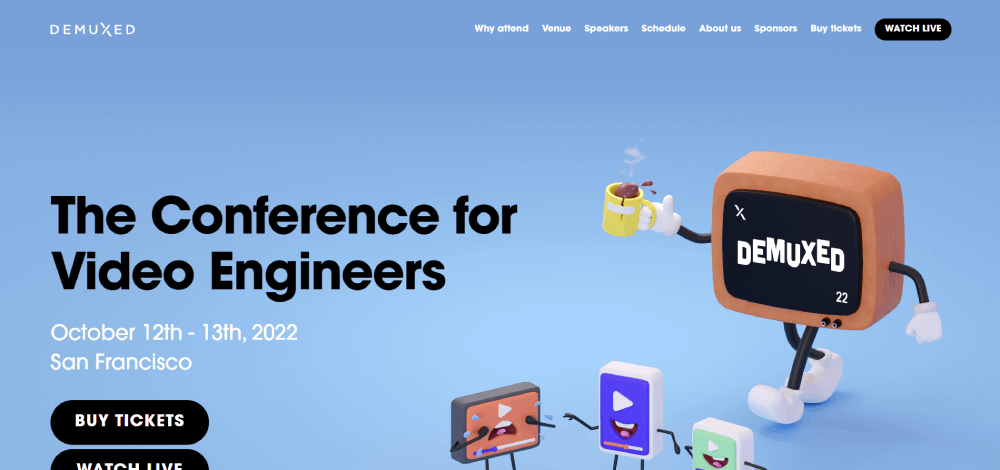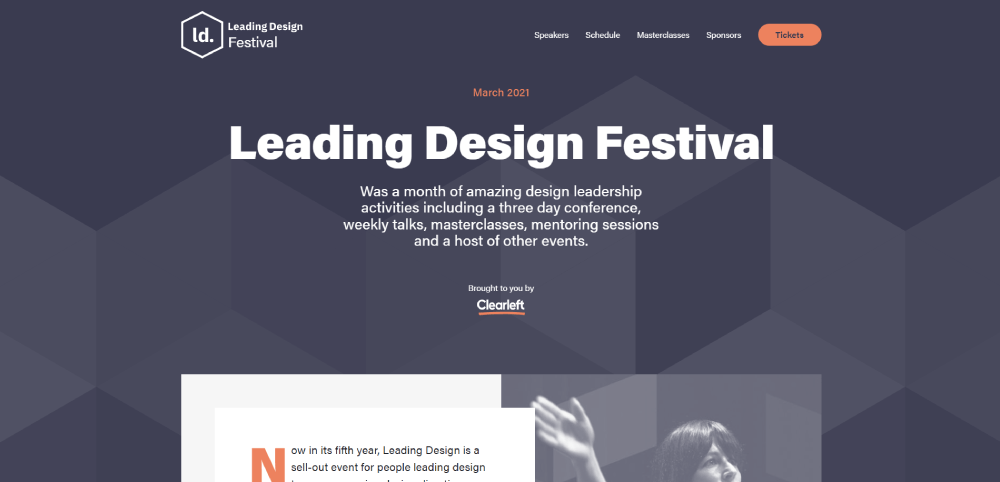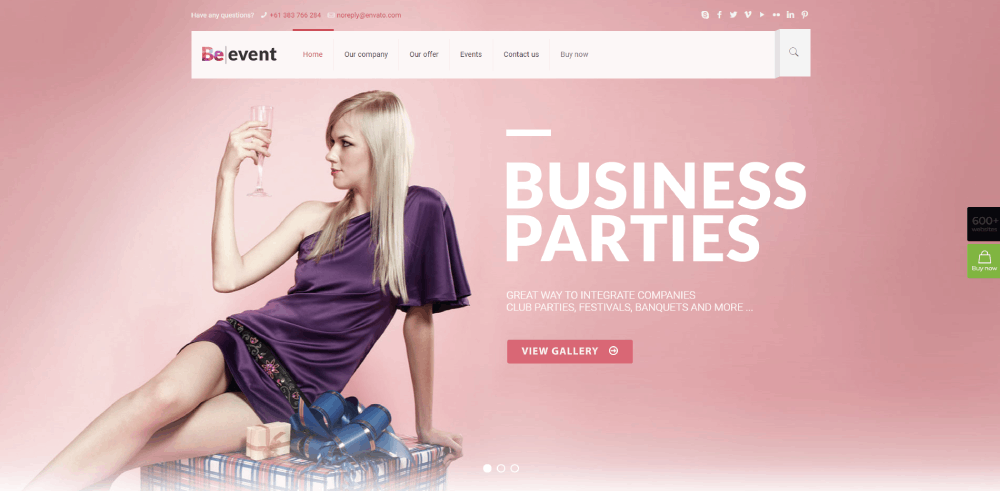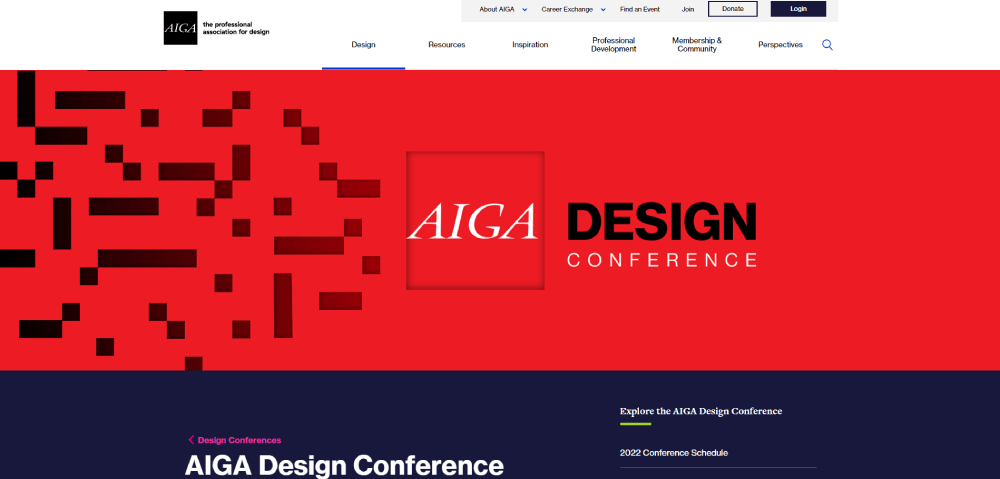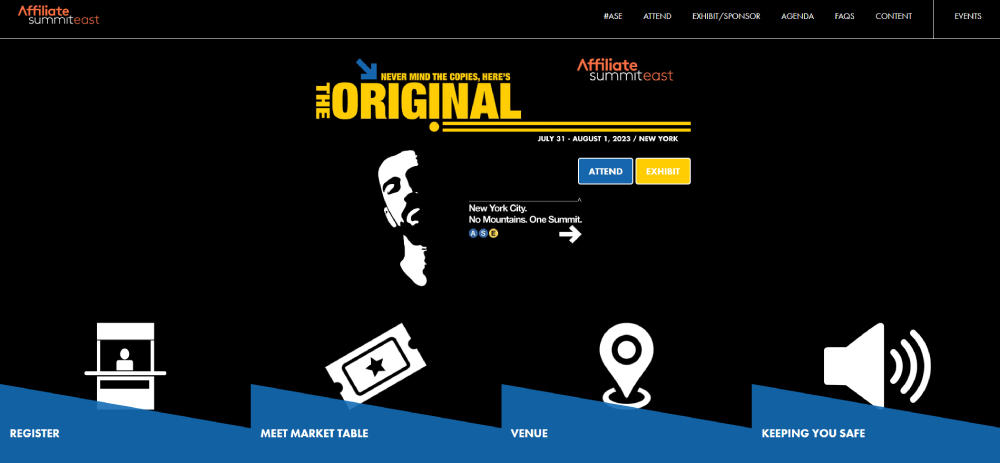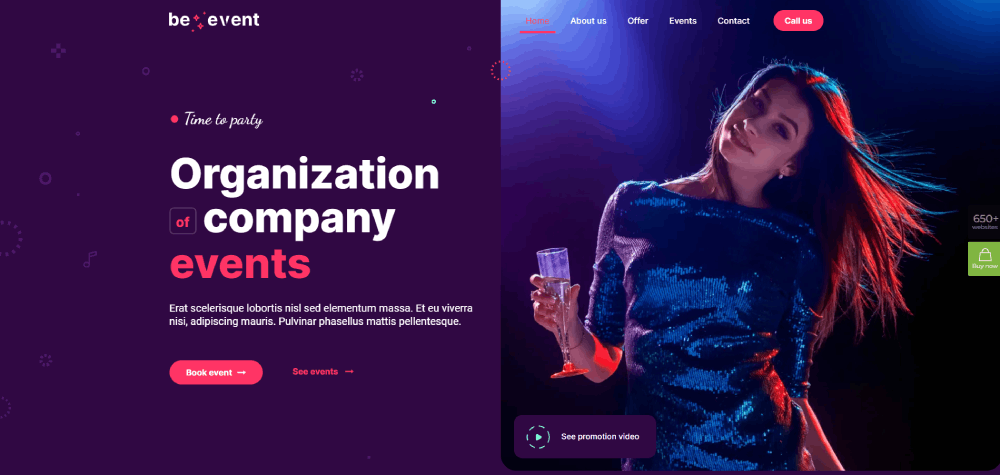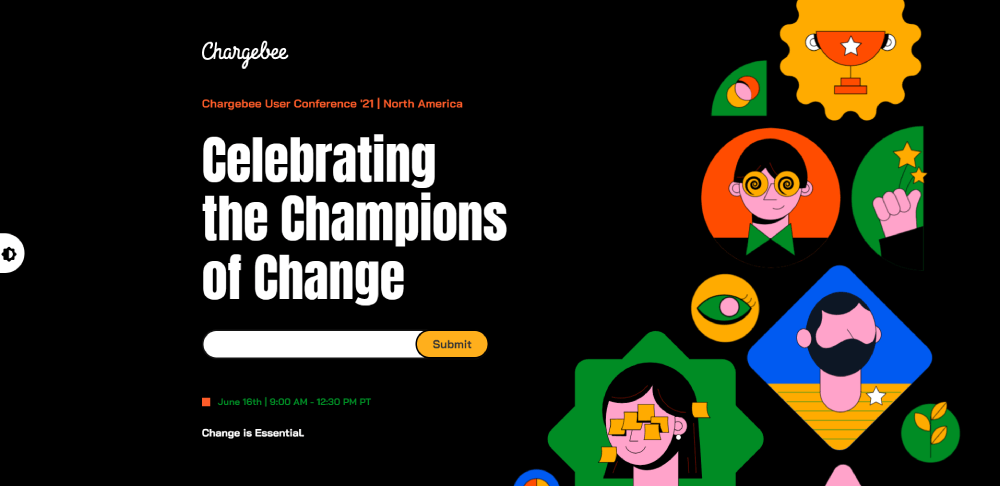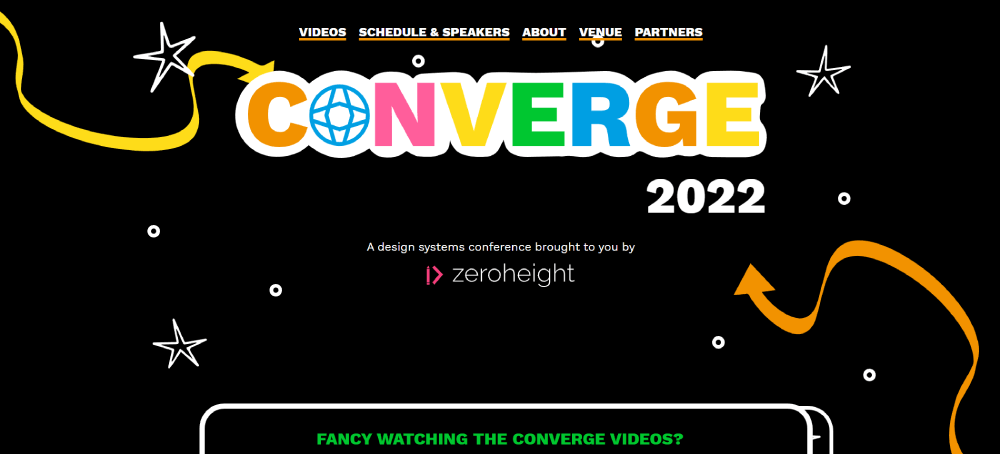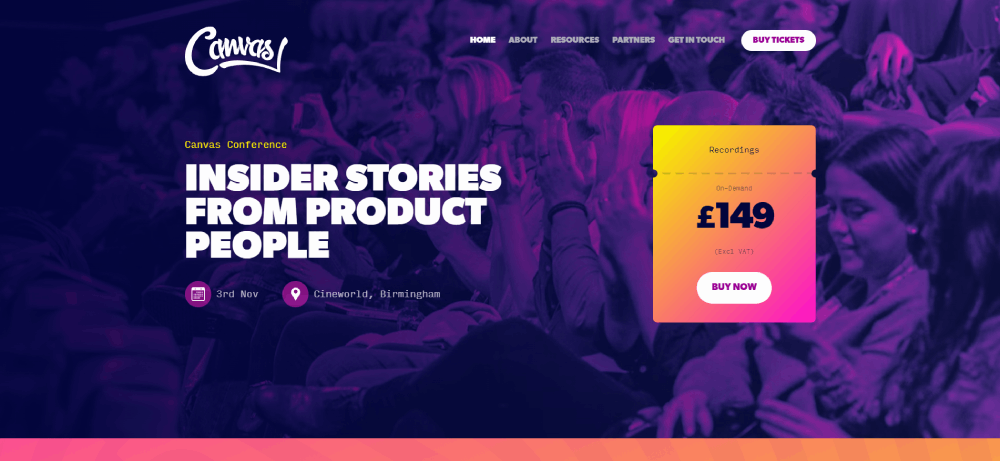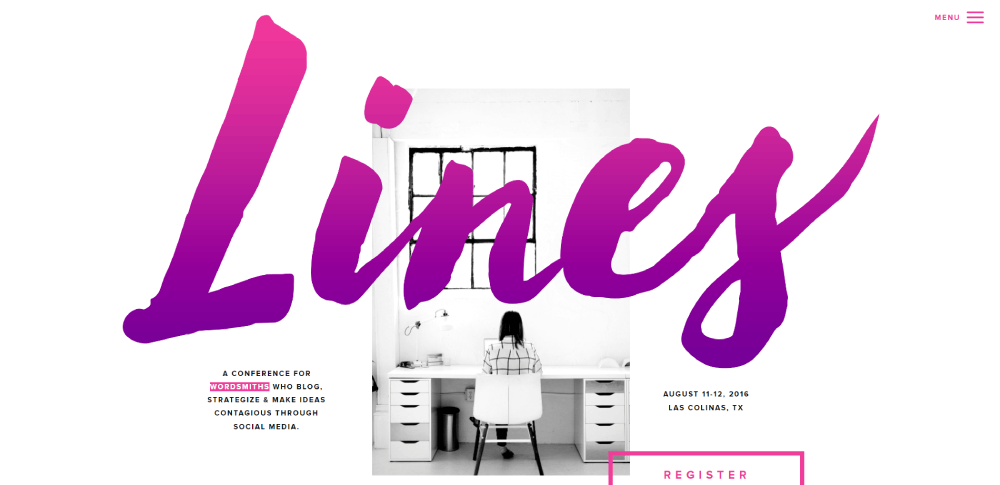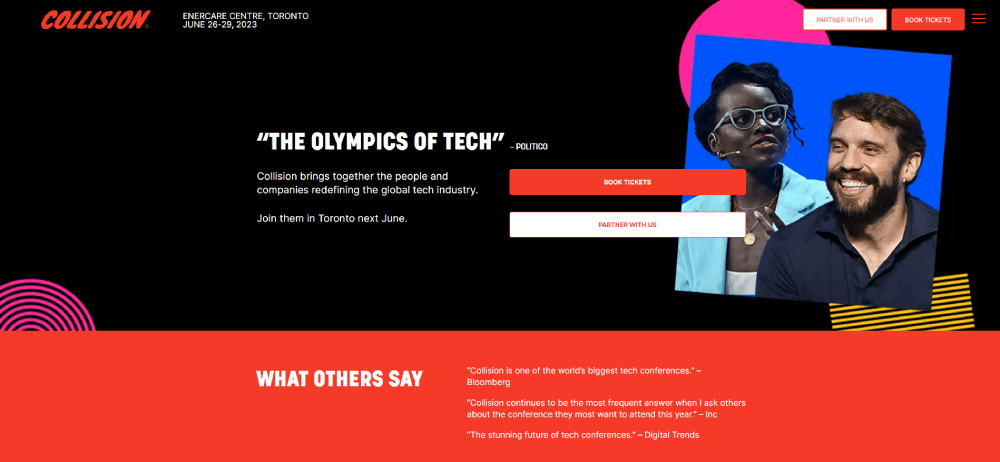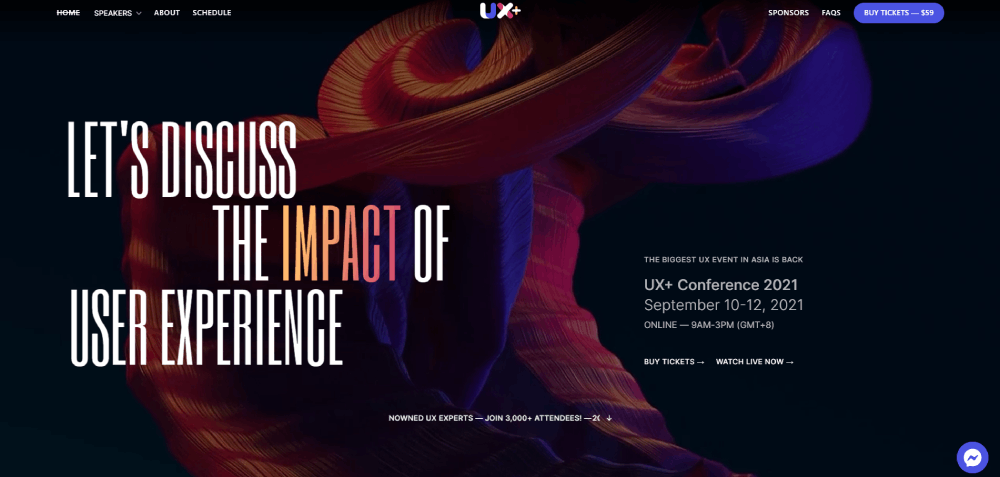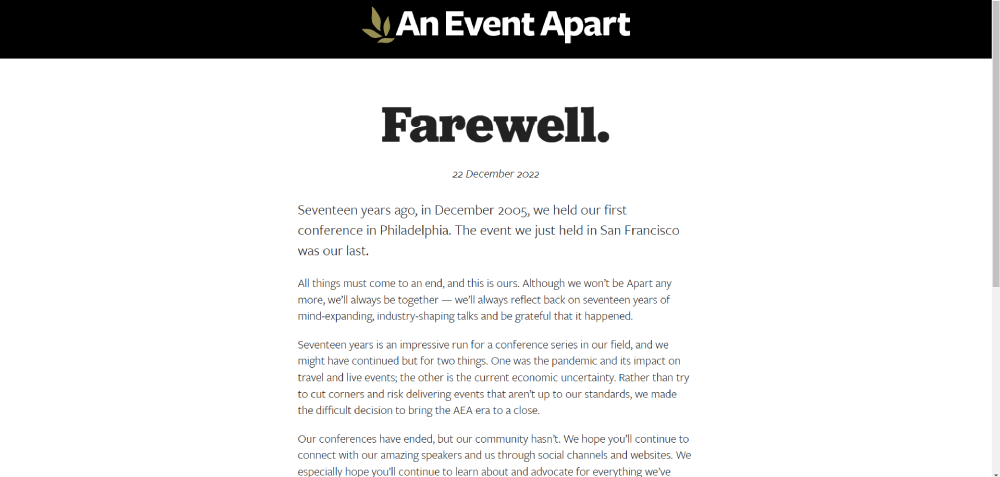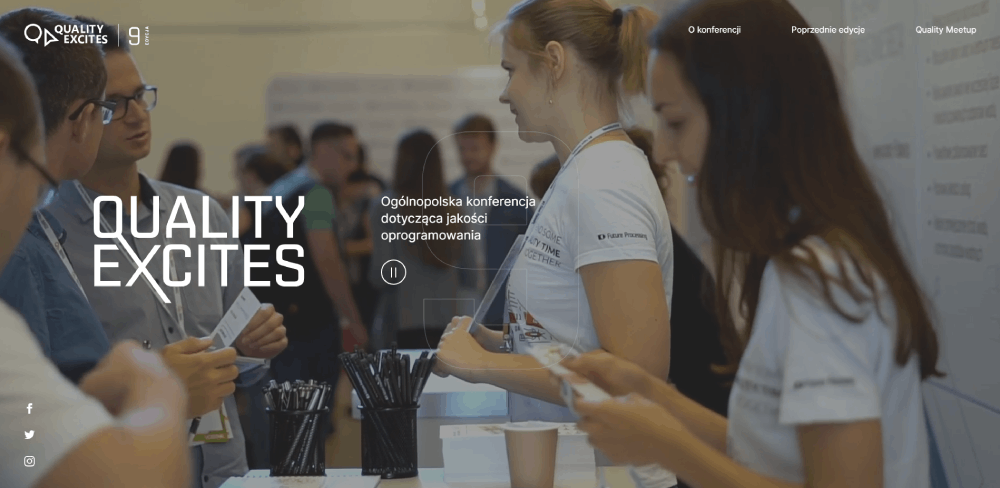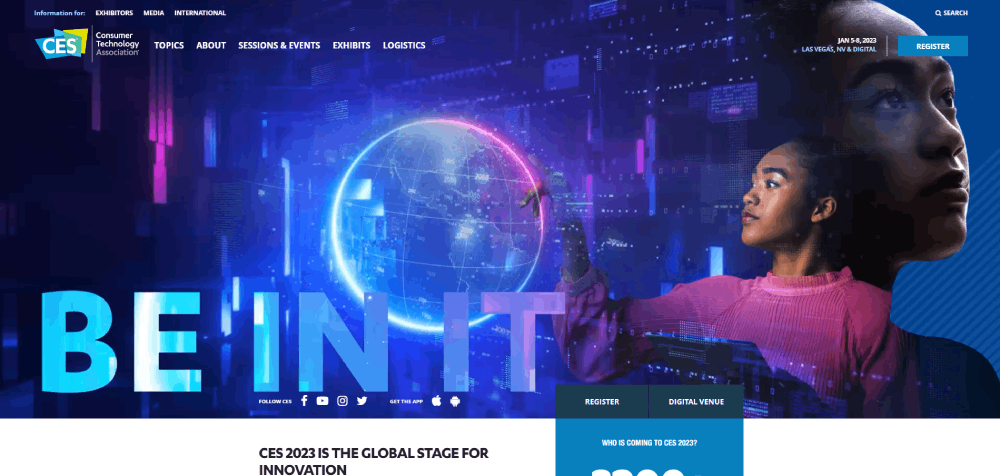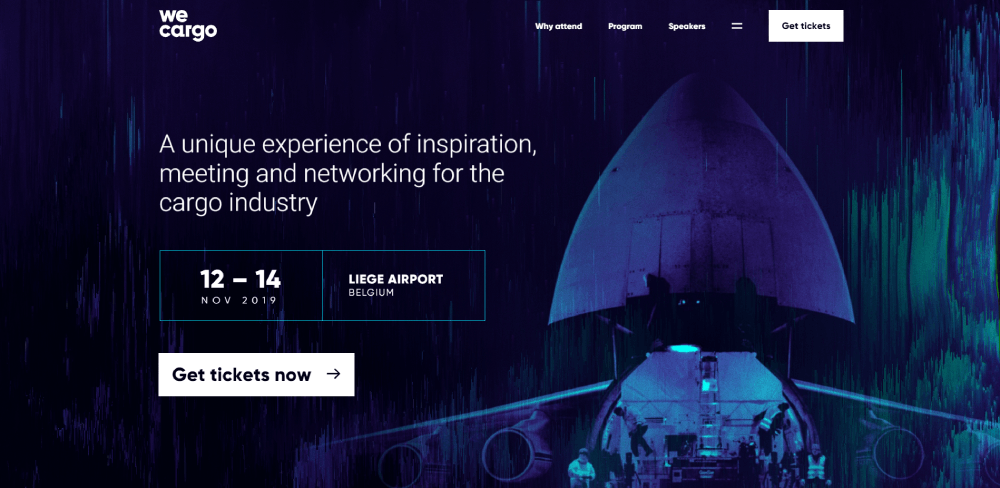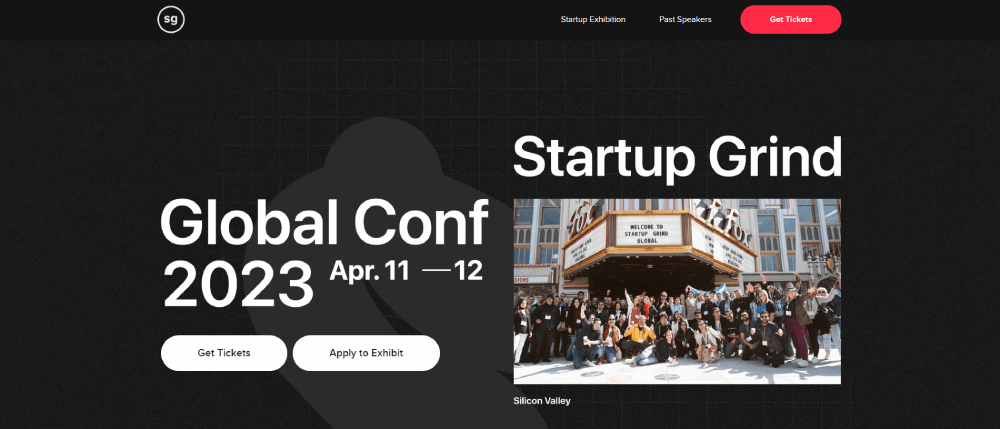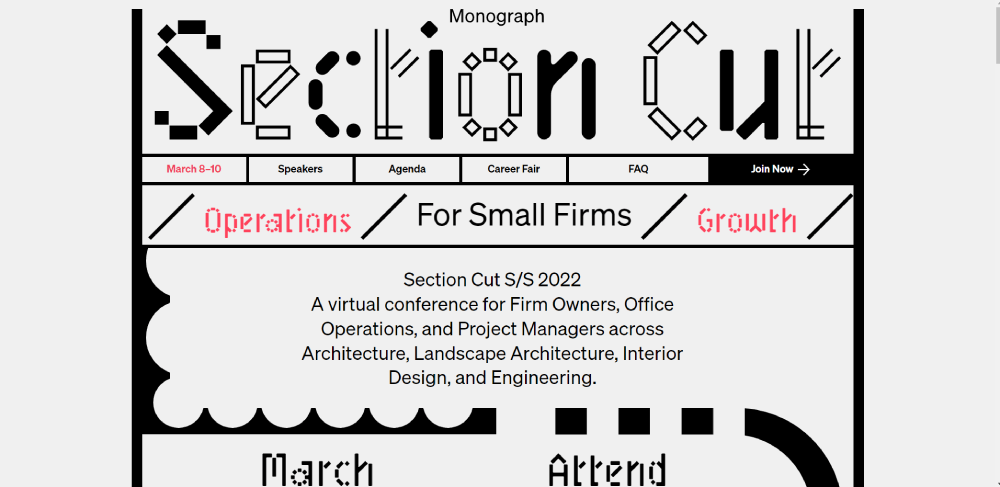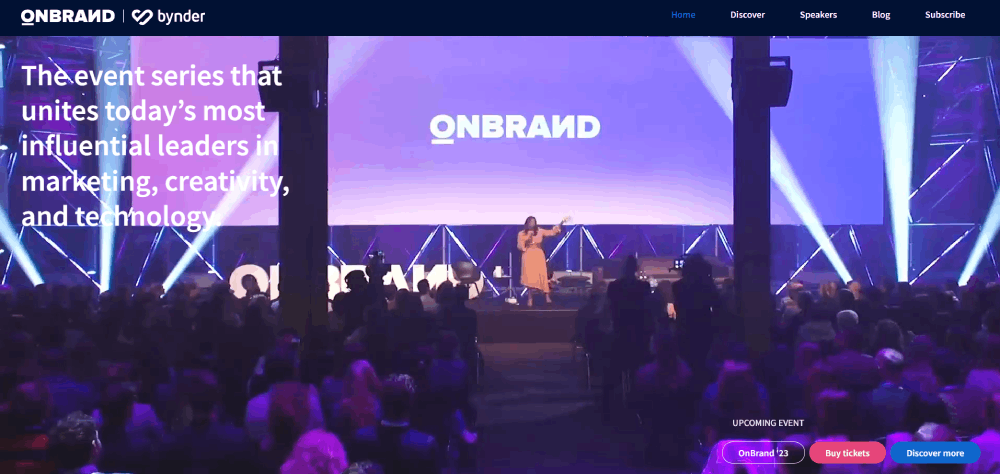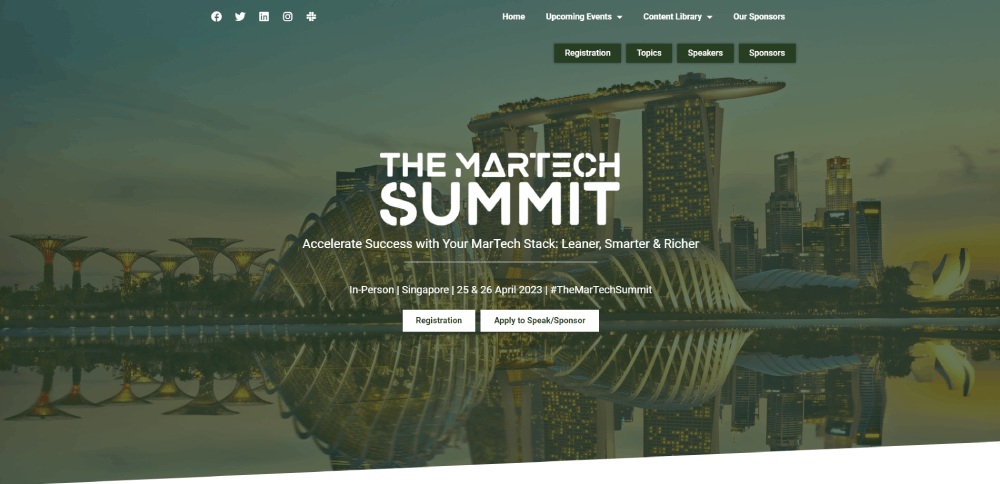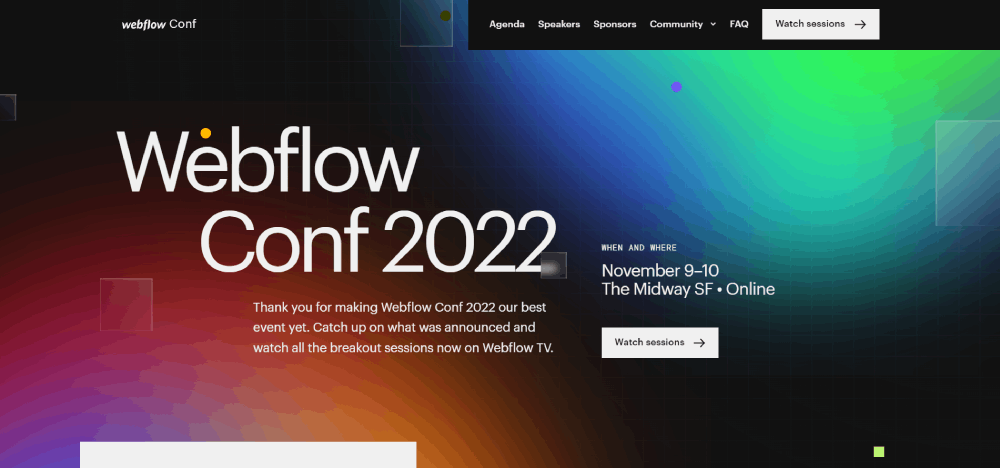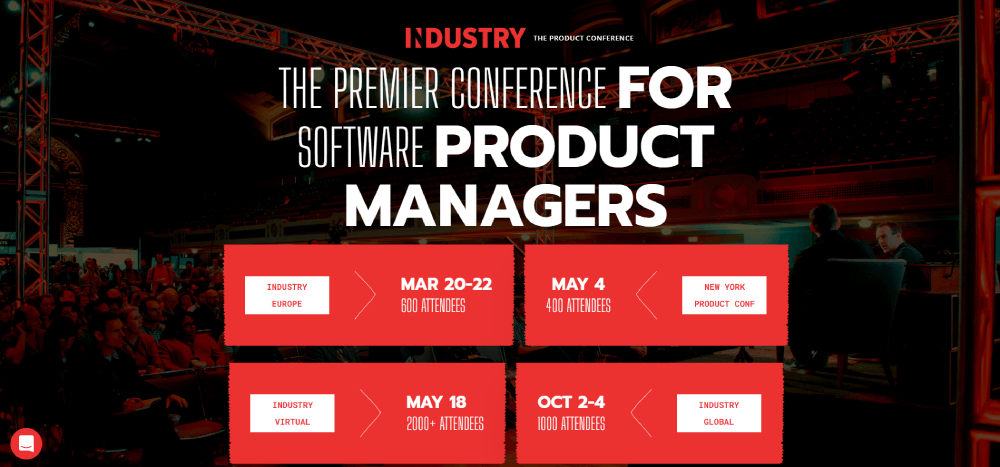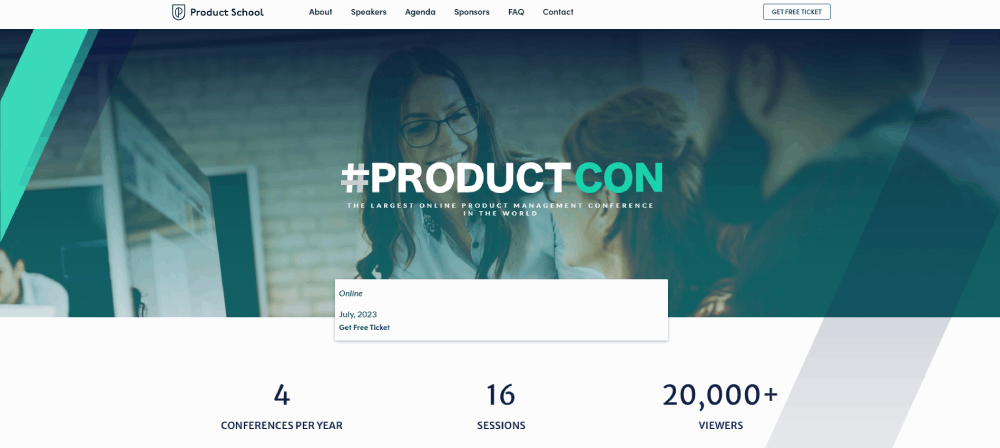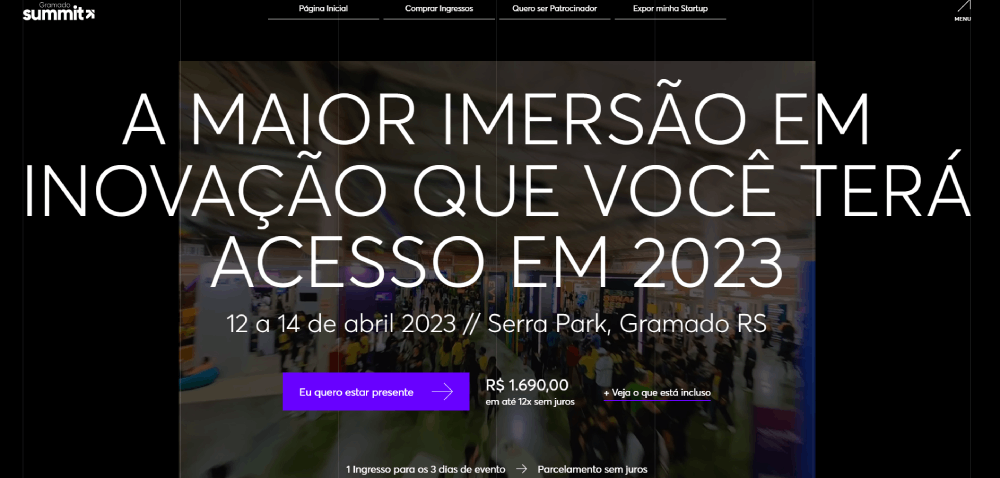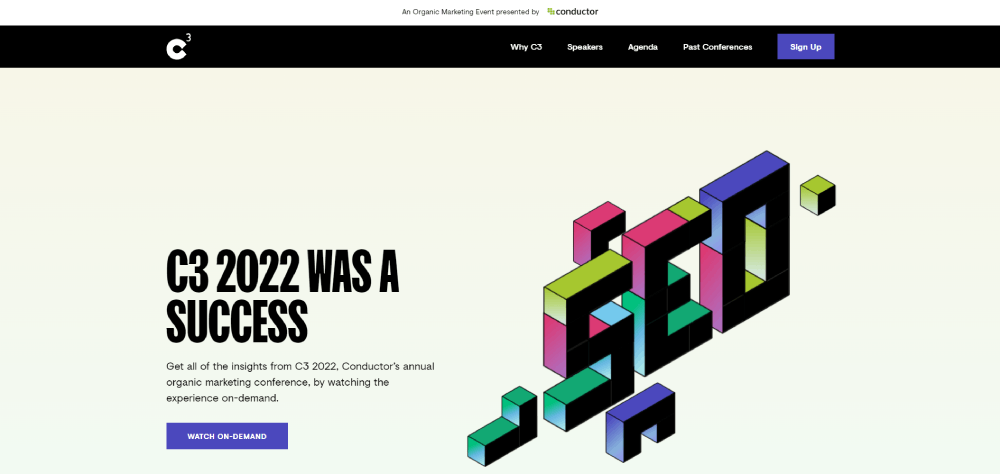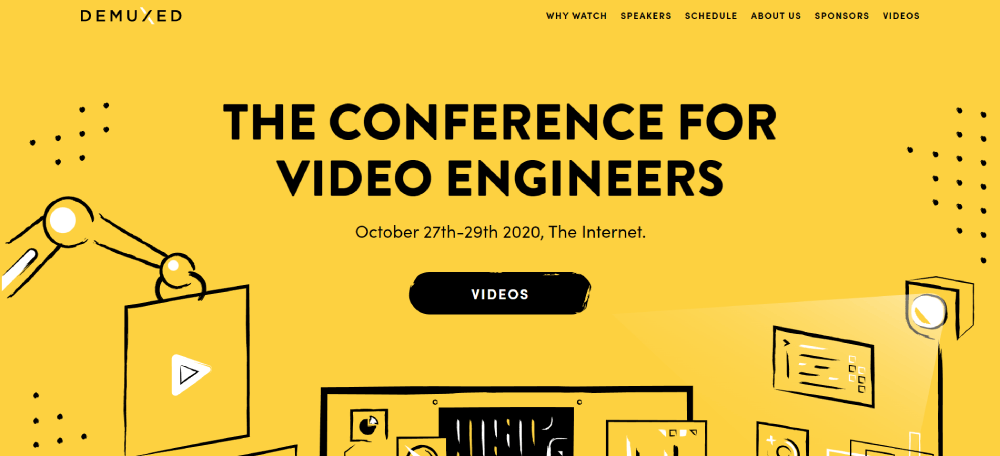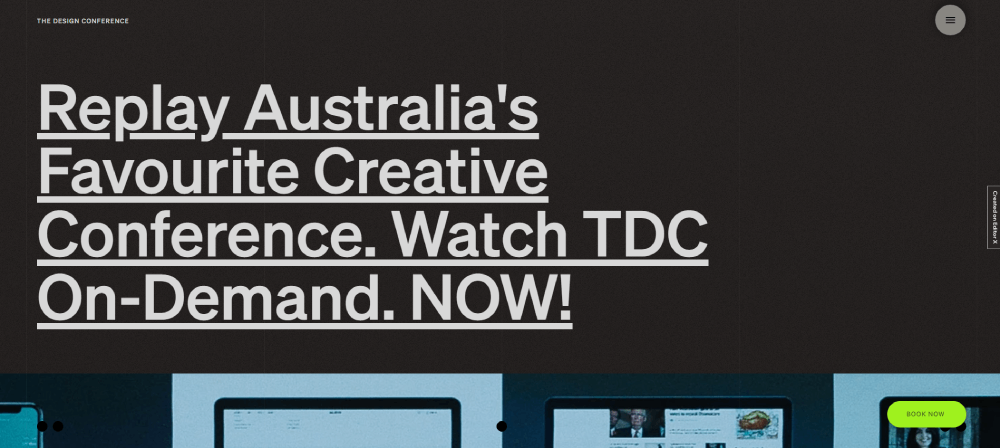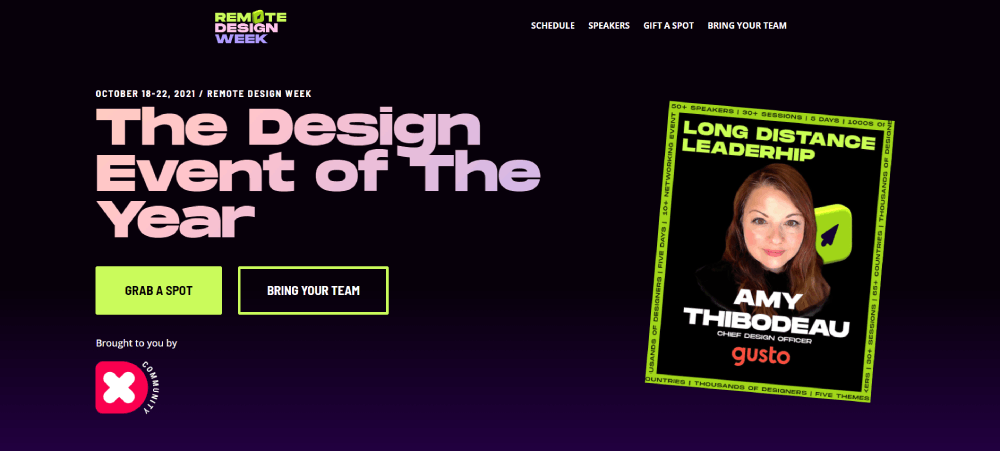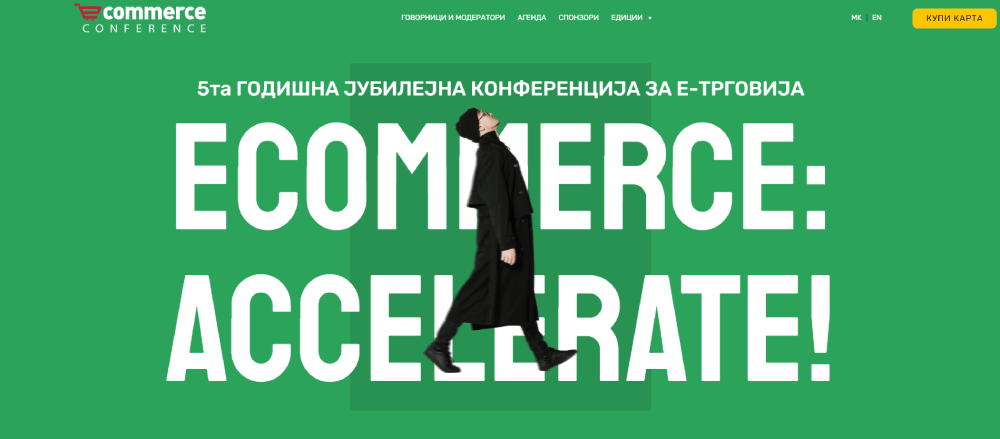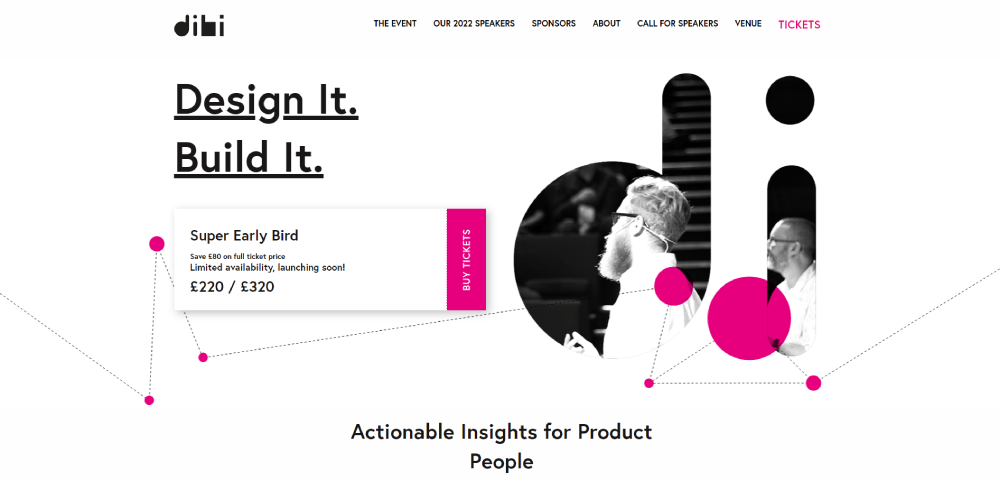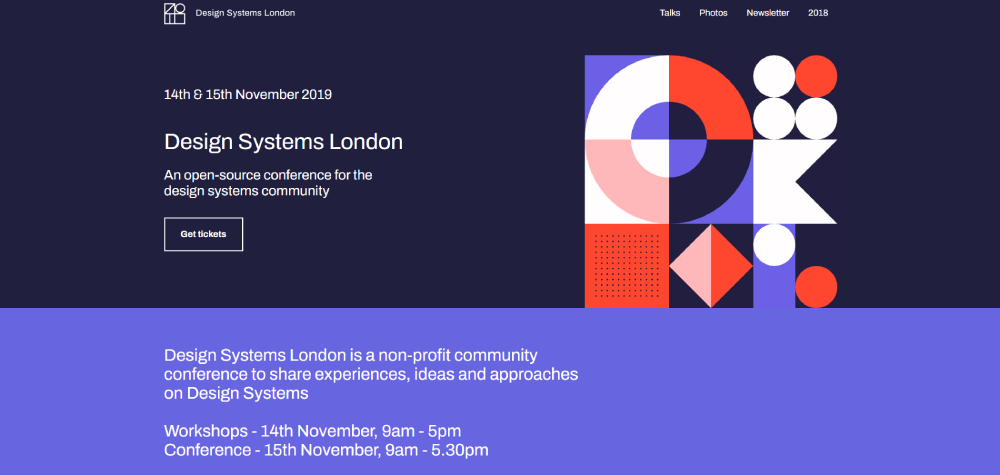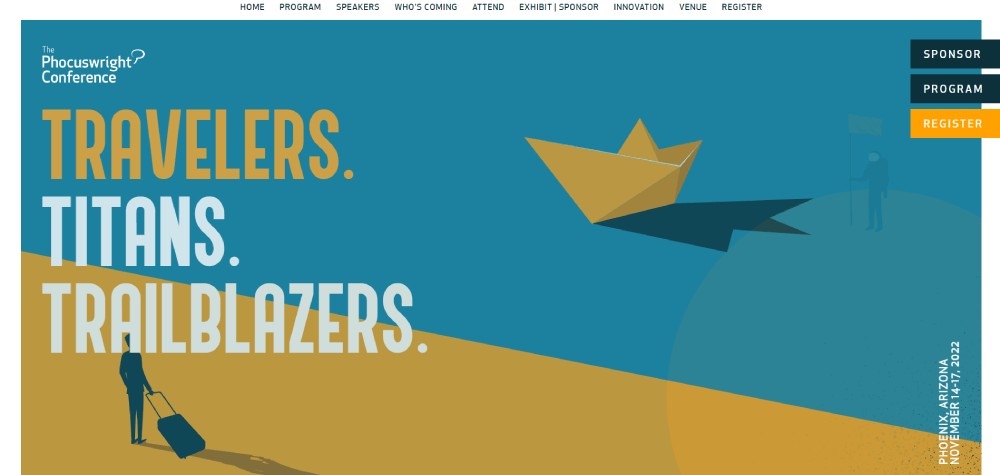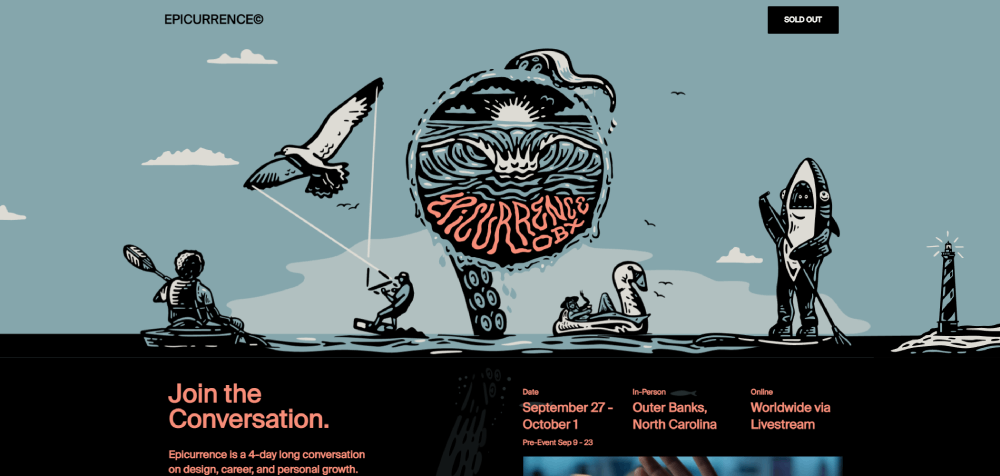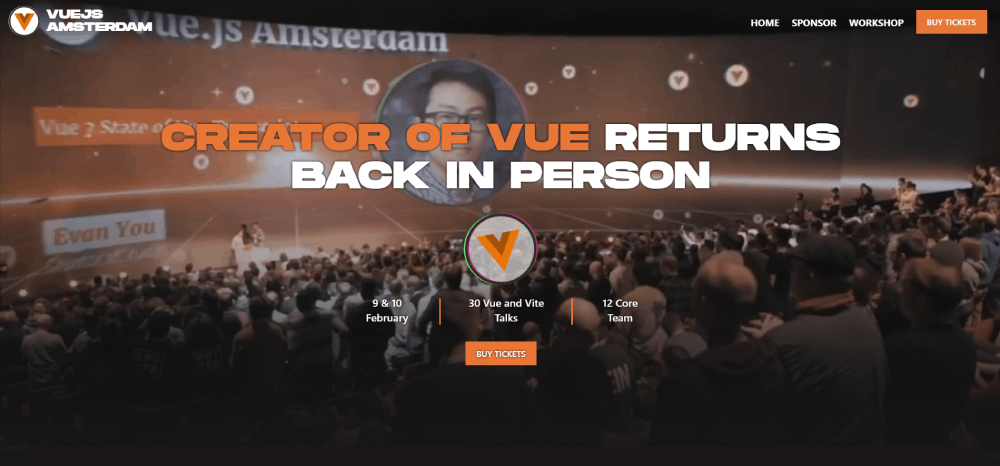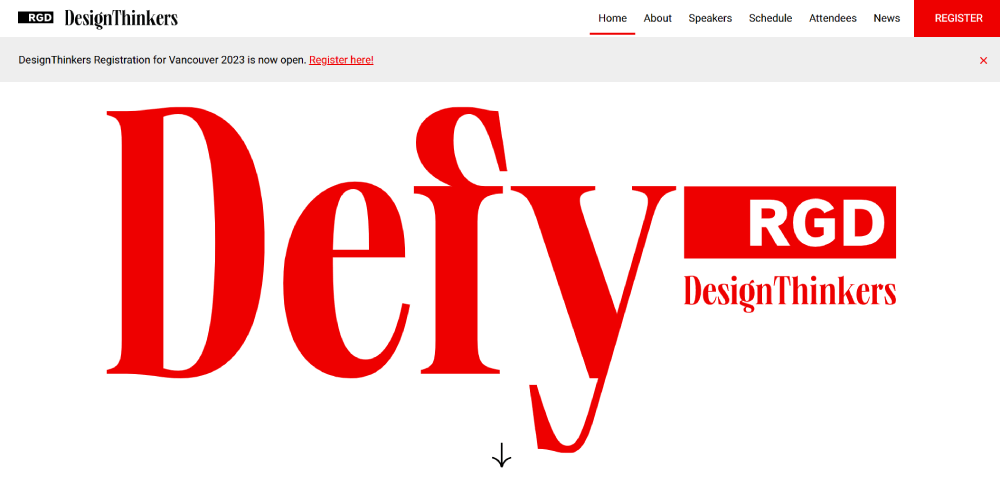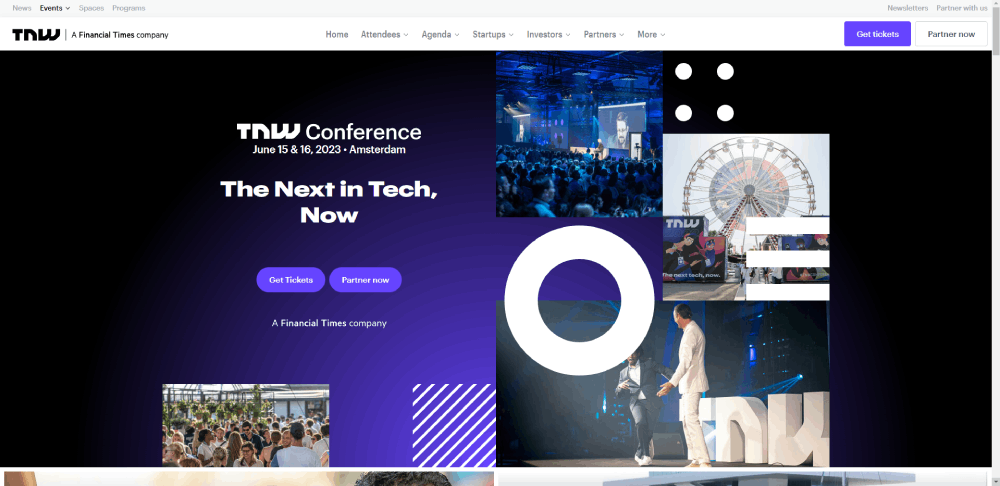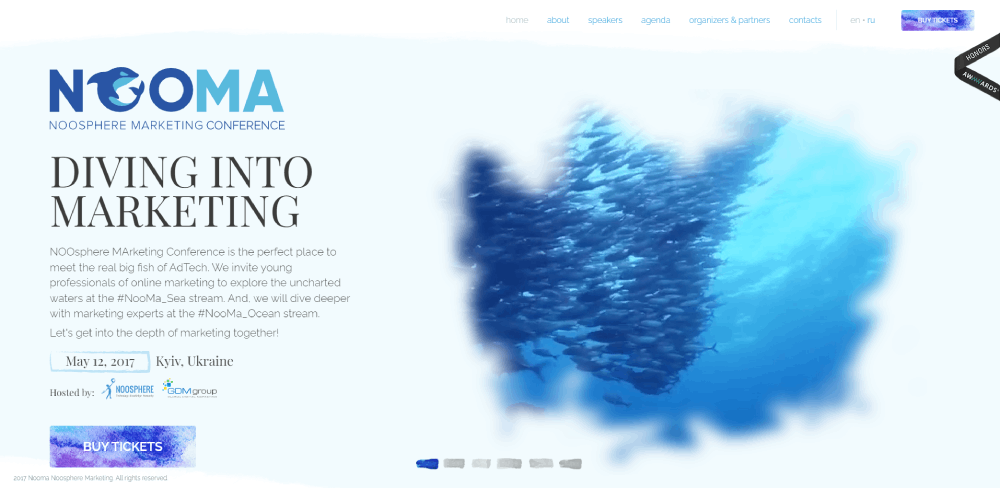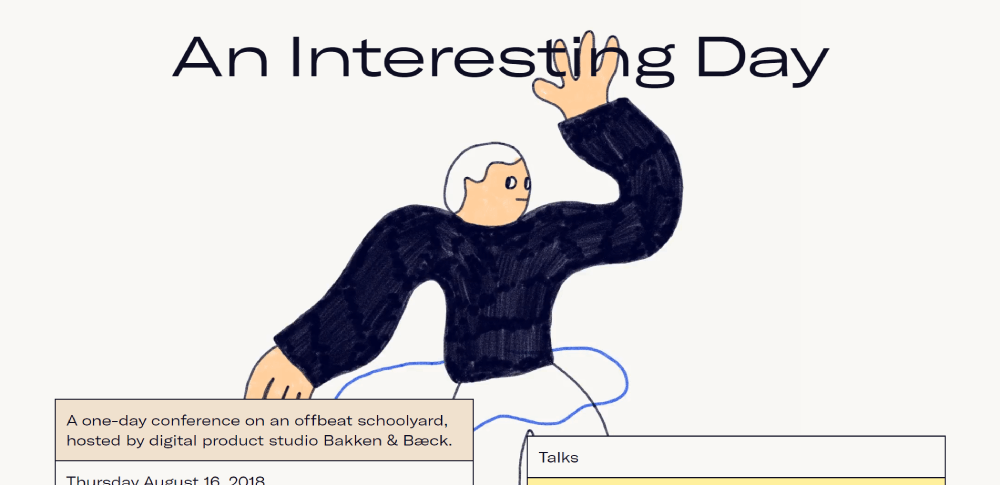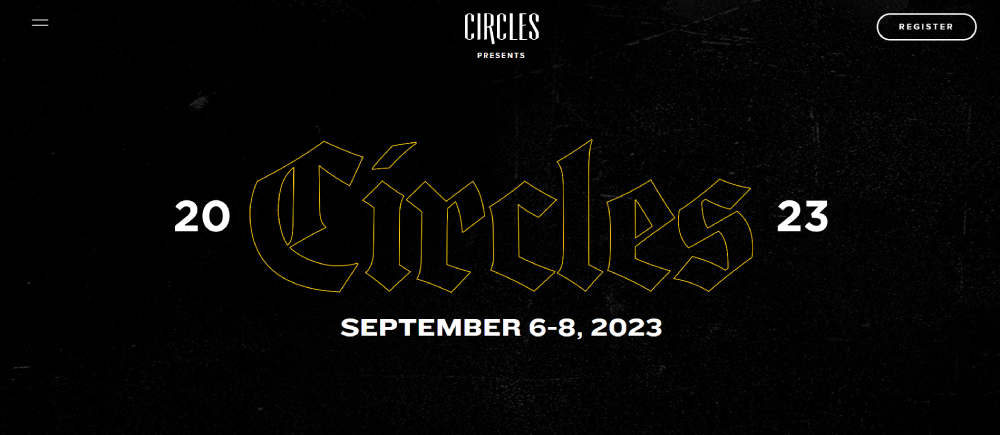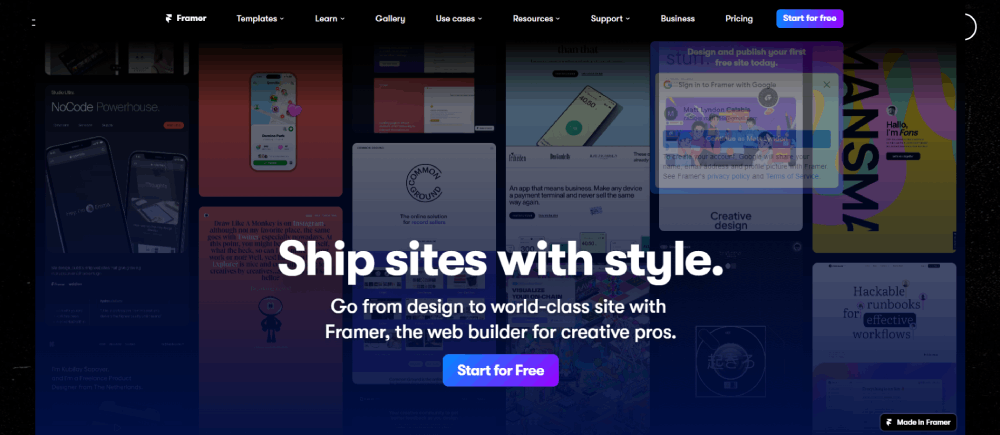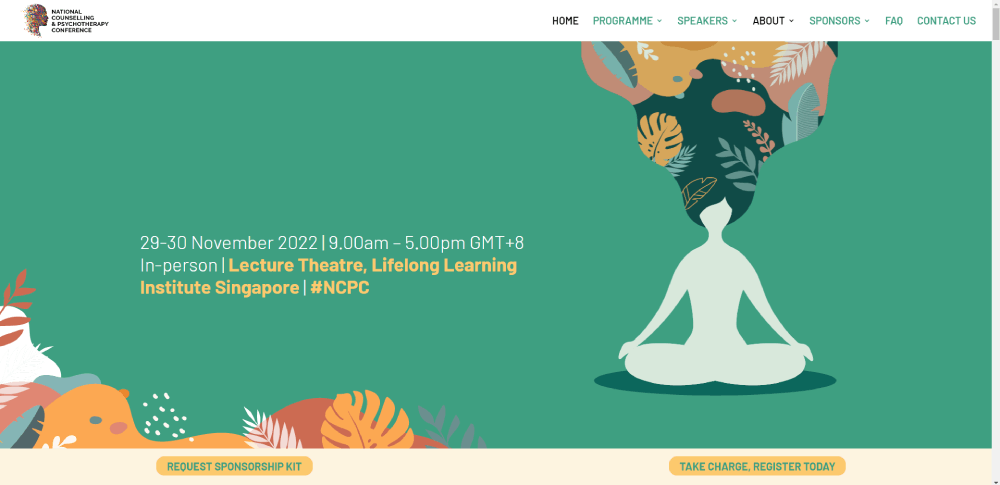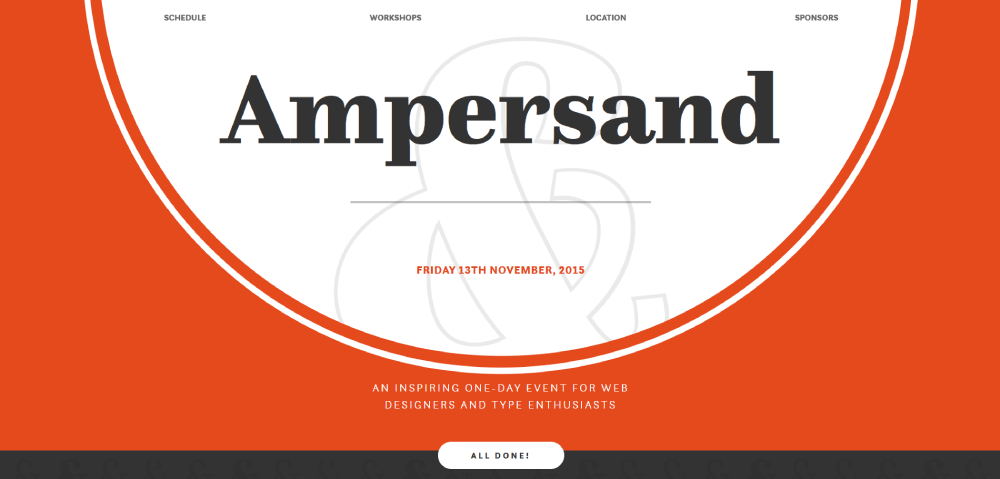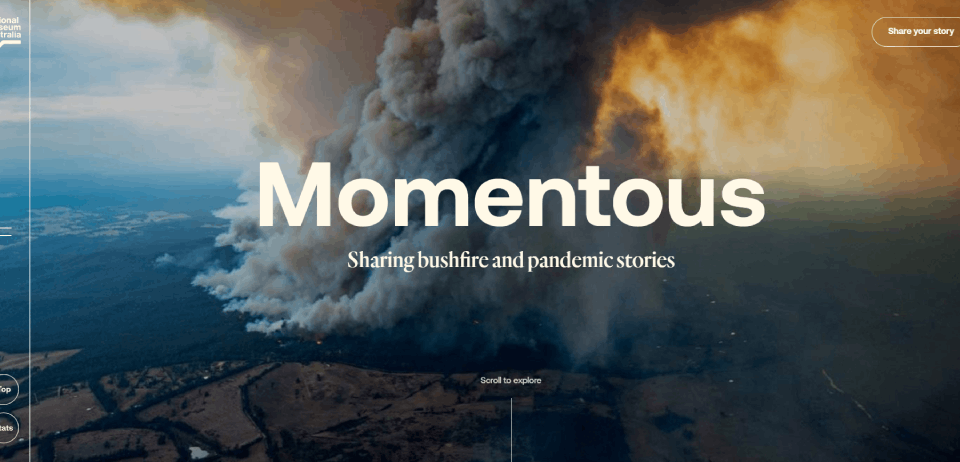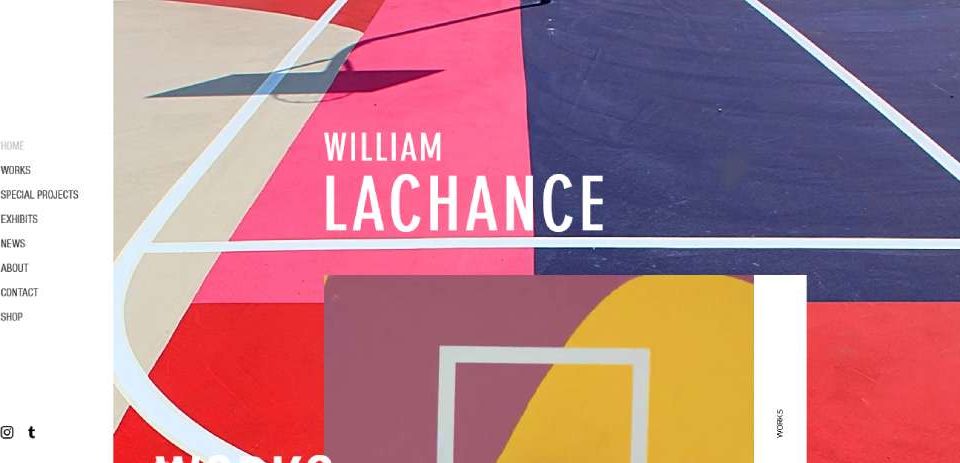Deliciously Inspiring Food Website Design Examples
September 4, 2025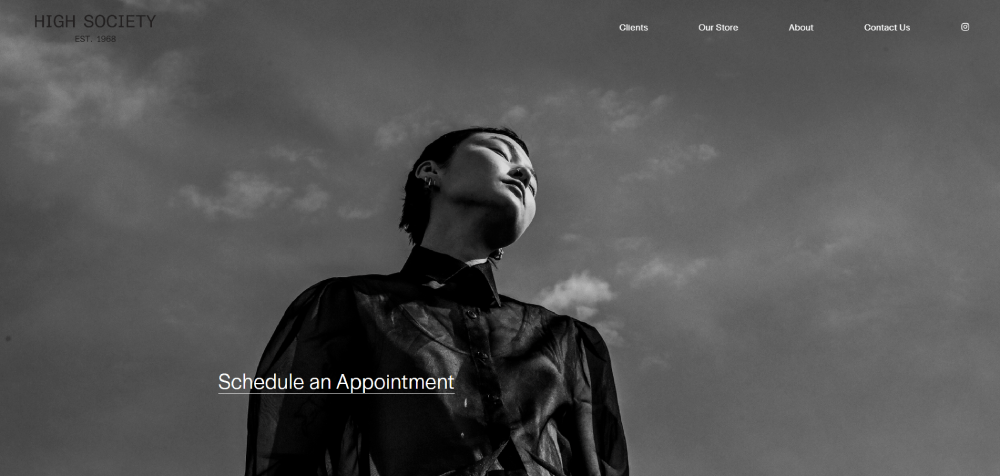
Stylish Tailor Website Design Examples to Inspire
September 7, 2025Your conference website has about three seconds to convince someone to register. That's it.
Looking at conference website design examples reveals what separates events that sell out from those struggling to fill seats. The difference isn't budget or brand recognition. It's design that actually works.
Most event organizers think they need flashy animations or cutting-edge layouts. Wrong. What you need is a site that answers questions fast, makes registration painless, and gets people excited about showing up.
This article breaks down real conference sites that convert visitors into attendees. You'll see what makes a summit landing page effective, how successful events structure their agenda displays, and which registration page designs actually reduce drop-off rates. We'll cover everything from speaker showcase sections to sponsor visibility, mobile-responsive layouts to livestream event interfaces.
Skip the guesswork. These examples show exactly what works.
Conference Website Design Examples
People Nerds Conference
FAQ on Conference Website Design
What makes a conference website design effective?
An effective conference site answers three questions immediately: what's happening, when it's happening, and how to register. The hero section should feature the event name, date, location, and a prominent call to action button above the fold.
Navigation needs to be simple. Attendees want speaker lineups, agenda schedules, and pricing without hunting through multiple pages.
How should I display the conference agenda on my website?
Use a schedule grid layout that separates multi-track sessions clearly. Color-coding by topic or room helps attendees plan their day fast.
Include filtering options so visitors can view specific tracks or days. Make sure the agenda is mobile-friendly since most people check schedules on their phones during the event.
What's the best way to showcase speakers on a conference website?
Display headshots with names and titles in a clean grid. Link each photo to a detailed bio page rather than cramming everything into tooltips.
Feature keynote speakers prominently at the top. Session speakers can follow in alphabetical order or grouped by topic, depending on your event structure and attendee expectations.
Should conference websites use video backgrounds?
Video backgrounds work when they're short loops that don't distract from registration buttons. They add energy to event landing pages but kill performance if too large.
Skip video entirely if your audience includes international attendees with slower connections. A strong static image with good typography often converts better anyway.
How do I design an effective conference registration page?
Keep form fields minimal. Ask only for information you actually need right now.
Show pricing tiers clearly with early bird pricing display highlighted. Use progress indicators for multi-step forms. The fewer clicks between "I want to attend" and "registration complete," the better your conversion rate.
What should be included in a conference website footer?
Contact information, venue details, and social media links belong in every conference footer. Add quick links to FAQ sections and past event highlights if available.
Include sponsor logos here too. It fulfills sponsorship agreements without cluttering your main content areas or disrupting the attendee experience.
How can I make my conference website mobile-responsive?
Design mobile-first. Most people browse conference sites on phones while deciding whether to attend.
Test your registration form placement on small screens. Buttons need to be thumb-friendly. Agenda tables should stack vertically on mobile rather than requiring horizontal scrolling, which frustrates users.
What's the ideal color scheme for conference websites?
Match your brand colors but ensure strong contrast for readability. Tech conferences often use bold, modern palettes while academic events lean toward professional, muted tones.
Avoid more than three primary colors. Too many competing hues make your site look amateurish and reduce trust in your event's professionalism.
How do professional conference sites handle sponsor visibility?
Tier sponsor logos by package level. Platinum sponsors get larger placement, often in the header or immediately after the hero section.
Create a dedicated sponsors page with descriptions and links. Balance visibility with user experience by not letting sponsor content overwhelm the attendee-focused information that drives registrations.
Should I include testimonials from past conference attendees?
Absolutely. Social proof converts skeptical visitors into registered attendees. Feature 2-3 strong testimonials near your registration section.
Use real photos and full names when possible. Generic praise doesn't work as well as specific statements about networking opportunities, speaker quality, or career impact from previous years.
Conclusion
The conference website design examples in this article prove that simplicity beats complexity every time. Your attendees don't care about fancy parallax effects or animated transitions.
They want fast answers and frictionless registration.
Focus on what actually moves people from browsing to buying tickets. A clear event website layout with prominent speaker bios, an organized agenda display, and visible pricing tiers will outperform flashy designs that hide information behind unnecessary clicks.
Your professional meeting site should work flawlessly on mobile devices. Most registration decisions happen on phones during commutes or lunch breaks, not at desktop computers.
Test your forms. Check your load times. Make sure international attendees can access everything without frustration.
The best symposium homepage designs share one trait: they respect the visitor's time. Strip away anything that doesn't help someone decide whether to attend or complete their registration. Everything else is just noise that costs you ticket sales and credibility.
If you enjoyed reading this article about conference websites, you should read these as well:

